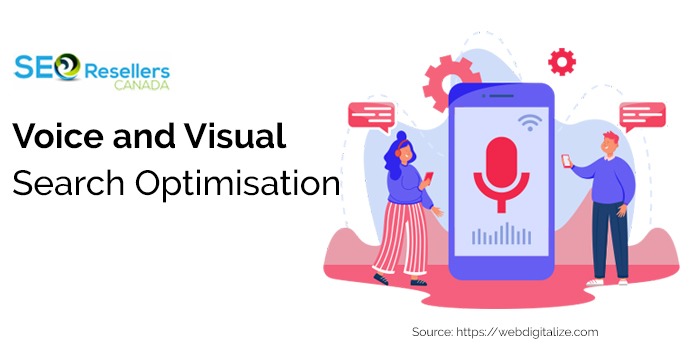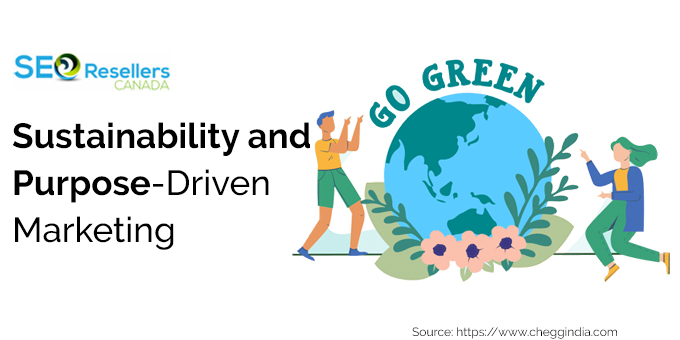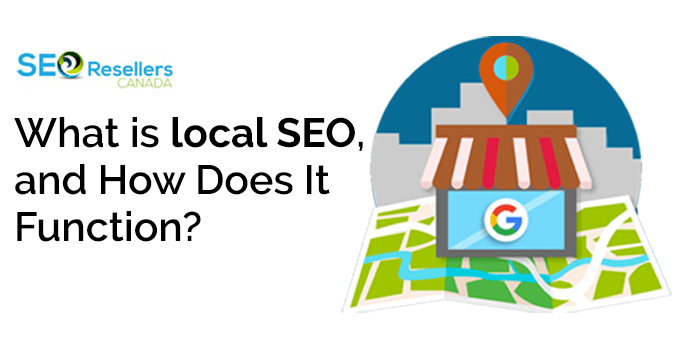Forward-looking digital marketers are seeing some key signals that are dominating the space to a great extent. In a world that has around 5.65 billion internet users and where more than 72% of global ad dollars are being spent on digital channels, the brand that stays ahead of the competition needs to build campaigns that focus on relevance and personalisation the most.
Trust is rare, and attention spans are decreasing. Artificial intelligence is also changing the way we view engagement. Traditional strategies are not effective any more. Marketers have to be one step ahead of what’s next or be left behind in an environment that shifts minute by minute.
Read to the end to find out the leading digital marketing trends that are gaining traction in 2025.
1- AI-Powered Content Development and Search Visibility

Artificial Intelligence is transforming how brands create their content and how the content is used by audiences across the platforms. We see that AI now assists in the creation of content more efficiently and to make it search engine optimised.
1.1- Smarter Content Creation
Marketing teams mainly use generative AI tools such as ChatGPT to do content development. These platforms help in –
- Writing blogs, headlines for social media, and email copy
- Creating outlines and descriptions of the product
- Improve the level of consistency and decrease time required to make the content.
AI does a fine job with the routine work. As a result, marketers can spend their time in creative aspects and storytelling.
1.2- Enhancing Search Visibility
Ranking high in search results is not enough anymore. Google’s AI Overviews (AIOs) are altering how users see content on the results page.
- In 2024, Google brought AIOs to display AI-generated answers directly on the SERP.
- By March 2025, their presence had increased by 115%.
- AIOs now take up 42% of the desktop screen and 48% on mobile, pushing organic links further down.
- Around 40% of sources shown in AIOs rank between 11 and 20.
This clearly shows that the top 10 is not going to ensure visibility. You need to:
- Organise your content clearly and think about the intent of your users
- Provide helpful, accurate information which can easily be summarised with the assistance of AI.
- Post good content that can be cited by answer engine optimization platforms like AI Overviews, Perplexity, and ChatGPT.
Content that educates and builds trust is much more likely to be surfaced across AI platforms.
2- Voice and Visual Search Optimisation

Voice and image search are changing the way users search for and interact with digital content. Marketers need to evolve their SEO strategies according to these.
2.1- Voice Search Behaviour
About 20.5% of the worldwide population uses voice search actively to look for information. This growing usage is resulting in search queries becoming more natural and conversational.
To improve for voice search, brands must:
- Use long-tail and question-based keywords
- Include FAQs within the content
- Prioritise fast-loading, mobile-friendly pages
Content needs to cover the users’ questions in a crisp way for voice-enabled devices to pick it up.
2.2- Visual Search Growth
With Google Lens and Pinterest Lens, you can perform searches with photos and screenshots. Around 62% of Gen Z and millennial consumers like visual search over any other process. A study found that almost 73% of people surveyed say they prefer visual search because traditional search capabilities fall short, especially on platforms such as Pinterest.
To best optimise for that, companies need to:
- Use high-quality, original images
- Include descriptive alt text and file names
- Use structured data to enhance your site’s search display results
These formats are essentially becoming the main method of discovery, especially on mobile and AI-based platforms. Brands that focus on voice and visual SEO can make engagement better and increase their footprint on the modern-day search landscape.
3- User Generated Content (UGC) to Bolster Trust

User-generated content is far more impressive than brand content in terms of credibility, authenticity and impact. By 2025, it’s one of the best means of establishing consumer trust and growing organic reach.
3.1- Why UGC Matters
Some 92% of consumers trust user-generated content more than advertising created by brands. UGC includes:
- Product reviews and ratings
- Social media posts from customers
- Testimonials and user stories
This creates authenticity and increases interaction. It also drives conversion by displaying the real-life use of a product.
More forward-thinking companies are beginning to create campaigns centred around customers, inviting them to share their stories.
4- Video Marketing Gets Shorter and Smarter

Video marketing is very important in 2025. But the format and idea have changed. Consumers now want to see short content that is fun and informative.
4.1- Short-Form Video is Leading
Engagement is highest on TikTok and Instagram Reels.
These formats are ideal for:
- Product showcases
- Quick tutorials and offers
About 21% of marketers believe short-form video has the highest ROI among all video types.
4.2- Smarter Production with AI
AI-powered tools are being incorporated into marketers’ video promotion strategy to amplify the impact using the following tactics:
- Automated editing and captioning
- Personalised clips for different segments
- Smart resizing for multi-platform publishing
A poll or quiz is another popular way to keep viewers engaged. Marketers can also experiment with several versions of the same video to figure out what works best and do so in real time.
5- Influencer Marketing 2.0: Niche and Authentic

Influencer marketing is now moving from follower counts to relevance. In 2025, brands are choosing micro-influencers and nano-influencers and their intimate relationships with small, niche communities. They have smaller audiences, but bring higher engagement and trust.
5.1- Why Smaller Influencers Matter
Micro and nano-influencers often enjoy
- A deep personal connection with their followers
- Higher engagement rates than macro-influencers
- Credibility in certain niches or local markets
Micro-influencer campaigns show 60% higher engagement rates than campaigns that only used larger influencers.
5.2- Focus on Transparency
Successful influencer strategies now prioritise
- Disclosing paid partnerships clearly
- Aligning with an influencer who has the same brand beliefs
- Allowing creative freedom to tell the real story
The brands that invest in influencers as partners, not billboards, are making more authentic campaigns and stronger brand equity in the process.
6- Social Commerce Will Dominate More Platforms

Social commerce goes beyond product discovery. It is transforming into a frictionless purchase journey in social apps where conversions are faster and more organic than we have ever seen.
6.1- Platform-Integrated Shopping
TikTok and Instagram are forging the path with integrated shopping capabilities. Brands can now
- Show products with direct links to buy
- Launch storefronts inside social profiles
- Use tags to get clicks from posts and reels
The popularity of the trend is expected to grow even more. Social commerce will reach 1.63 trillion dollars by 2025. This growth will be driven mostly by the younger generation.
6.2- Live Shopping and Instant Purchases
Live shopping is catching on as influencers and brands promote real-time product demos. Viewers can
- Ask questions during live streams
- See instant demonstrations
- Buy without ever leaving the app
This can shorten the distance between discovery and purchase.
7- Sustainability and Purpose-Driven Marketing

People are getting aware when it comes to shopping. They are focussing on ethical values, and this requires brands to demonstrate true purpose.
7.1- Consumer Shift Toward Responsibility
Recent studies show that:
- 78% of people want to buy from eco-conscious companies making a positive difference to society.
- More than 60% are prepared to pay a premium for such products.
This trend is highly prevalent among the Gen Z and millennial audience.
7.2- ESG Storytelling and Digital Strategy
Marketers are building purpose-based messaging into their campaigns, including:
- Internet stories of environmental and social good
- Transparency on sourcing and packing processes
- Certifications and third-party validations
That’s purposeful marketing – the kind of marketing that creates lasting loyalty and faith, not just some kind of attention-grabbing noise.
8- Immersive Experiences via AR and VR

The domain of augmented reality and virtual reality has blossomed into impactful media for immersive brand storytelling. There’s an increasing use of AR and VR to provide engaging, emotional connections.
8.1- Augmented Reality Enhances Discovery
AR filters and product try-ons enable people to:
- Visualise items in real time
- Try on eyewear, makeup, furniture, and more from home
- Engage with branded content in new, playful ways
Instagram and Snapchat are the most popular platforms for AR experiences that combine social sharing with product discovery.
8.2- Virtual Reality Creates Full Immersion
VR campaigns enable users to
- Experience virtual showrooms or branded worlds
- Participate in virtual events or product launches live
IKEA and Nike are some of the brands providing a virtual reality-based experience, which increases engagement and retention. Immersive marketing makes curiosity and emotion its currency. It provides consumers with a reason to stay longer and remember more.
9- Smarter Chatbots
Conversational marketing is witnessing a huge traction in marketing in 2025. No more stilted responses and annoying chatbot loops. The chatbots of today are more intelligent and intuitive. They are able to respond to natural, two-way conversations like never before.
9.1- Smarter, More Human Interactions
According to studies, 79% of businesses that use conversational bots have increased customer loyalty, revenue and sales performance. Brands can now churn out conversational bots that –
- Understand context and intentions better
- Engage in fluid, real-time dialogue
- Offer personalised product recommendations
Marketing, too, is getting in on the act, with voice assistants being used to help people search for things, or even to shop, using voice alone.
9.2- Real-Time Support
Chatbots are no longer restricted to customer service. They have become an integral part of marketing funnels by
- Responding in real time during ad campaigns
- Aiding the user to finish purchasing
Apps such as WhatsApp are adopting integrated AI chat agents that play the role of brand representatives. The experience is less scripted and more conversational.
10- Email Marketing Gets a Makeover with AI and Interactivity

Email first continues to be the lynchpin of successful digital strategy in 2025. But the look and feel are being transformed rapidly. Static emails don’t cut it, and are being replaced by interactive design and more personalised messaging with higher conversion rates.
10.1- Smarter Emails with AI Assistance
Artificial intelligence is changing the way marketers write and schedule their emails. With AI, brands will be able to
- Make subject lines from previous engagement
- Optimise send times per recipient
These capabilities send the right message to the right user at the exact time the user needs to receive it.
10.2- Interactivity Through AMP Technology
AMP is giving email marketing a long-overdue upgrade. It is making messages interactive and action-focused. Users can now engage directly within the email using drop-down menus, and much more. This makes the user journey better, allowing them to take surveys or book a service without ever moving out of their inbox. Typically, AMP emails have seen 3x higher conversion rates when compared to HTML emails.
10.3- From Broadcast to Experience
There has been a transformation in emails from a broadcast channel to an interactive publishing medium. It is –
- Visually engaging
- Actionable in real-time
- Tailored to individual behaviour
These alone are getting brands improved open rates and better click-throughs. It also creates deeper customer connections and can be much more effective than a standard old newsletter.
11- To Conclude
Artificial Intelligence and immersive tools are changing the online domain. Visibility alone is no longer enough for a brand. It is now all about personally meaningful experiences. The challenge now is to apply data with creative imagination and let the leads flow into the sales pipeline.
The idea here is to apply these trending aspects in the digital marketing space and establish a better connection with the intended customers.
12- FAQs
12.1- What key trend will be prevalent in e-commerce this year?
AI will be a deciding factor in content and personalisation for online shopping. They support accelerated development of useful brand content and increased discoverability across search engines, AI Overviews, ChatGPT, and Claude.
12.2- How are businesses mastering short-form video content?
Short videos are powerful for engagement and brand recall. They are suitable for quick, casual messages and are a great option for cell phone users.
12.3- Why is UGC so significant in the digital marketing space?
User-created content is so powerful because it connects with customers, due to the fact that it is people just like them sharing stories. It also increases community engagement and natural reach.

















